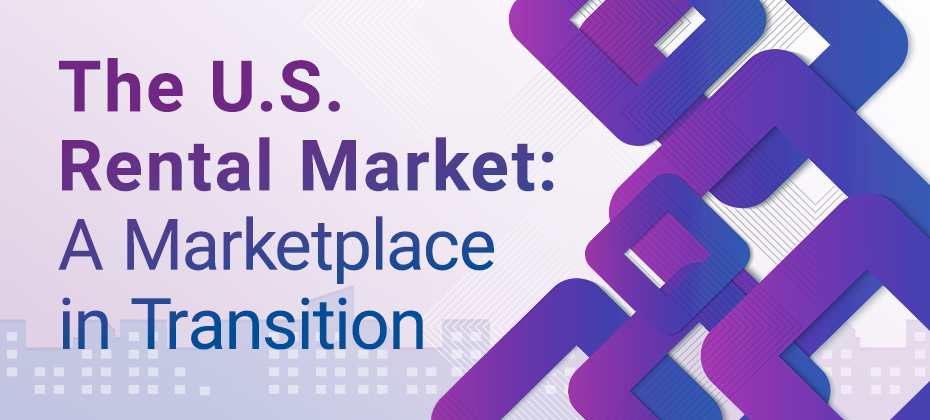Tag: rental fraud

Transformations in today’s U.S. rental market reflect changing economic and market forces. These dynamic times present challenges and opportunities for property managers and landlords seeking more stability and consistency in their property occupancies. The real estate industry responded positively to the Federal Reserve's recent announcement to cut interest rates by a quarter percentage point, marking a favorable shift from previous actions that kept rates steady. However, uncertainty lingers about the extent and pace of changes in the residential real estate market, including the rental and buying sectors. Experts remain optimistic, predicting improvements as the market heads into next year's busy season. Landlords and property managers looking to attract more stable renters need to understand macro- and micro-market trends, renter demographics and preferences, and other information impacting their specific locales. Experian Housing published its 2024 report on the U.S. rental market, which provides data-driven insights into the current rental landscape. Experts examined today’s renter population, current market trends, the state of housing development, and the market’s future. Who is today’s renter? Today’s renter is still navigating financial constraints and potential marketplace affordability challenges. While location-specific information does influence the affordability of renting versus buying a home, on average, affordability remains an important factor guiding consumer decision-making. Our latest rental report highlights a notable shift in the rental market, with a growing number of younger renters and a decline in the average annual income among renters. According to Experian’s RentBureau®1, over 30% of renters are Generation Z—the youngest adult demographic. Expanding this to include individuals under 34 years old, younger renters now represent over half of all renters in the United States. Experian’s research highlights a shift in rental spending trends, showing the average income for renters now at $52,600. RentBureau data underscores the evolving financial landscape, with rent-to-income (RTI) ratios reflecting a growing commitment to housing. On average, individuals allocate 44.1% of their income to rent, while low-to-moderate-income households dedicate 52.5%. These figures exceed the traditional guideline of keeping rent within 30% of gross monthly income, underscoring the significant economic pressures faced by renters, particularly those with low-to-moderate incomes, as they navigate rising housing costs and limited affordability in the current market. This reality highlights the urgent need for broader systemic solutions to address housing availability and affordability challenges. What is happening in the rental market? Rental market trends reflect several factors, including changes in renter demographics, interest rates, housing supply and demand, and the economy. Overall, vacancy rates have stayed relatively low, which has resulted in rising rent prices, although there are signs of flattening. With fewer housing options available, many renters stay put for longer, which also contributes to availability and affordability. More renters, over 50% of all renters (a 10% increase over May 2023), are paying $1,500 or more in monthly rent, and the nationwide average rent stands at $1,713. A regional look offers greater specific insights for landlords and property managers, which is critical for truly understanding the marketplace. In 2024, 43 of 50 states have RTI ratios above the suggested guideline of 30%. California has the highest median RTI at just over 46%, followed by Massachusetts, Florida, Washington, and New Jersey. Other states facing increasing RTI ratios include Georgia, North Carolina, Colorado, Texas, and Nevada. These high ratios negatively affect affordability. At the same time, Experian Housing research indicates that over 92% of renters hold a single lease over two years. Data also shows 6.7% of renters with two leases in 24 months and others moving three or more times in this timeframe. Older generations, surprisingly, are moving more now than in recent years. Where is development headed? High mortgage rates are constraining housing development, especially for affordable entry-level homes. Roughly 50% fewer starter homes are being built, and multifamily new construction also faces constraints. With that said, multi-family housing units already under construction are coming to market. These units are generally high-end, contributing to increased rental prices. The supply coming to the market is higher-priced due to greater construction costs across the board. Contributors to the rising costs include builds in pricier metropolitan areas as well as features and modern amenities sought after by younger renters. The U.S. Census Bureau reports a slight uptick in new home construction since July 2023. How is the future looking? The U.S. economy is expected to remain stable, which should benefit renters and landlords alike. The outlook for the rental market in 2024 and 2025 remains optimistic with inflation down and the Fed rate cut, but many other factors come into play, specifically, overall economic health and the state of the employment market. For renters, the best tact is to set goals to improve their overall credit profiles and opportunities in the housing market. Individuals benefit from rent reporting. Experian RentBureau helps renters build credit profiles and open the best opportunities for the rental market and moving to the first-time homebuyer market. With rental housing still in high demand, property managers and landlords should focus on tenant screening, rent reporting, and fraud prevention as part of their risk management strategies. Focusing on these areas will increase the chances of finding quality, longer-term tenants. To learn more about the state of the U.S. rental market, download Experian Housing’s 2024 rental report. Access report 1 RentBureau® is the largest rental payment database that contains more than 36 million renter profiles. While RentBureau doesn’t represent the total U.S. rental market population, internal studies reveal RentBureau data aligns closely to historical U.S. Census data studies, which provides confidence in the deeper understandings aggregated in the report.

This article was originally published on multifamilyinsiders.com One of the challenges currently facing the rental housing industry is the amount of lease application fraud. An Entrata study found a 111% increase in lease application fraud between 2019 and 2020. In the same study, 55% of surveyed apartment managers and rental operators said their properties experience fraudulent lease application attempts every few months, and 15% said their communities were subjected to multiple attempts each month. One-third of respondents described themselves as "very concerned" about application fraud. Just as alarming as the rise in attempts is the apparent likelihood of success. In the study, 65% of apartment managers said they are not confident in their current fraud prevention efforts. Some applicants can use a range of tools to commit fraud such as fake pay stubs, bank statements, employment records, and other falsified documents. Unfortunately, readily available computer technology makes it all too easy for applicants to produce these falsified documents. Tools to fight against fraud Apartment communities that rely on an overly manual screening process may find themselves at a disadvantage in the current landscape. Relying on associates to manually verify things like income and employment history can increase the risk of a deceitful applicant being successful. In addition, these processes can be extraordinarily time-consuming, which means leasing associates have less bandwidth for their many other important duties and responsibilities. Not to mention, the units stay unoccupied while these time-consuming verifications are being done manually. Among the general screening technologies that operators should consider: Automated verification of income, assets and employment — These solutions eliminate the need for operators to collect this kind of documentation from applicants. Furthermore, it eliminates the opportunity for applicants to supply falsified supporting documentation. Frictionless authentication — A multi-layered identity verification process for those applying for rental housing, frictionless authentication detects the subtle and not-so-subtle signs that an applicant is, to one degree or another, using a false identity. By highlighting discrepancies, the process assigns a “score” to quantify the likelihood that misrepresentation is taking place. Additional confirmation of the applicant’s identity can be completed using a one-time passcode (OTP) or knowledge-based authentication (KBA). This technology also uses device intelligence to recognize the risks associated with the physical devices (such as computers, tablets, and smartphones) that consumers use for online applications to identify potential imposters. In today's landscape, apartment owners and operators need to make sure they're protecting themselves against fraudulent applicants, who may not fulfill their financial obligations as outlined in their leases. By embracing the ever-growing array of advanced screening tools and technologies, owners and operators can achieve that protection and reduce their risk significantly — and save their associates time and energy.